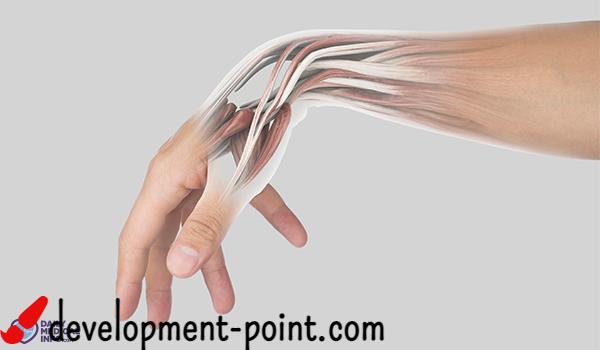What is an orgasm? And how to be when men and women?
Many people consider orgasm to be the height of sexual arousal; This is because it gives a strong sense of physical pleasure. But there is still more research to know what an orgasm is. And what happens during it for men and women? Follow the article to know more.
What is an orgasm?
According to the American Psychological Association, orgasm is the feeling when a person reaches the climax of sexual pleasure during any sexual activity, in which case the body relieves tension, and the muscles of the perineum, anal muscles, and genitals contract rhythmically.
Usually, a man ejaculates upon reaching an orgasm, while a woman feels contractions of the vaginal wall. Some women may ejaculate during sexual activity or when they feel an orgasm.
Description of orgasm
During orgasms, the couple may feel intense pleasure in the genitals and throughout the body, and the feeling of pleasure from orgasms varies according to each individual.
As for after an orgasm, the person may feel the blood flow to the face, neck, or chest, and the person may also feel sleepy, relaxed, or happy after that, which are signs of an orgasm on the body; Due to the release of endorphins.
orgasm models
Sexuality researchers have identified orgasms within models of sexual response, and although the process of reaching orgasm can vary greatly between individuals, several underlying physiological changes tend to occur in most cases.
The following patterns include patterns that occur in all forms of sexual response and are not only related to intercourse and penile-vaginal penetration.
1. Master and Johnson Model
Master and Johnson’s 4-phase model includes four phases, namely:
- Excitement.
- Threshold (Plateau).
- Orgasm.
- Relaxation.
2. Kaplan’s model
Kaplan’s 3-stage model includes three stages, namely:
- Desire.
- Excitement.
- Orgasm.
This model differs from most other sexual response models; This is because it includes the stage of desire, and most models tend to avoid including non-reproductive changes, such as desire, but it should be noted that desire does not necessarily precede all sexual activity.
Stages of female orgasm
In females, the muscles of the vagina and anus may contract about once per second, for about five to eight times, and heart and breathing rates may increase at that time.
Before and during orgasm, the vagina may become wet, and the woman may ejaculate. Research indicates that the percentage of females who ejaculate can range from 10 to 70%. Immediately after orgasm, a woman’s clitoris may feel more sensitive or uncomfortable to touch.
The female orgasm is divided into four stages:
1. Excitement
Once a woman is sexually aroused, her heart will start to beat faster and she will breathe faster, after that she will tense various muscles all over her body, her breasts will swell slightly, and her nipples may become erect.
blood flow increases, and some women’s faces, necks, or chests may become flushed, and a woman’s clitoris becomes enlarged; Because of the blood flow to the genitals, this leads to an increase in the size of the vulva as well.
A woman’s vagina will begin to make a natural lubricant that will make sex more enjoyable and comfortable. Her labia will flatten and swell from the inside as well. Her vagina will also lengthen and widen. All this happens because blood rushes to the pelvic area.
2. Threshold
As the excitement continues, the blood continues to flow and everything becomes more spacious, and all of the above changes become more noticeable. However, with increased blood flow, the nipples may appear less erect, and the clitoris retracts toward the pubic bone, becoming up to 50% shorter before a woman reaches sexual climax.
3. Orgasm climax
When a woman reaches orgasm, blood rushes to her skin, and muscles throughout her body continue to contract, including those in the uterus and vagina. Blood pressure, heart rate, and breathing rates will continue to rise.
In the vagina itself, the woman will feel regular contractions in the outer part of the vagina, in her uterus and in the anus, these intense pulsations occurring about once every second.
Mild orgasms contain three to five pulses, while intense orgasms contain 10 to 15 pulses. An orgasm may last from 13 to 51 seconds, which is longer than that of men.
Reaching orgasm in a woman differs from that of a man. In the case of a woman, there is no recovery period, as she can continue to reach an orgasm in the event of continued sexual stimulation.
4. Relax
At this stage, the body begins to gradually return to its previous position before sexual stimulation, so the bloating will decrease, the heavy breaths and the rapid heartbeat will decrease, and the genitals will begin to return to normal.
Stages of orgasm in a man
The male orgasm is divided into four stages:
1. Excitement
When a man is sexually aroused either physically or psychologically, this stimulation causes the brain to send a signal through the spinal cord to the genitals, resulting in an erection.
In this case, the penis becomes erect when blood fills the spongy tissue inside it, brought by arteries that have widened to allow the blood to accelerate up to 50 times its normal speed.
The veins in the penis that normally push blood out are then closed off. This is so that more blood remains inside, which leads to a stable erection, after which the scrotum is pulled towards the body and muscle tension increases throughout the body.
2. Threshold
The man’s body begins to prepare for orgasm at this stage, which can last from 30 seconds to 2 minutes, muscle tension increases even more, and involuntary body movements begin, especially in the pelvis.
A man’s heart rate may reach between 150 and 175 beats per minute, then a clear liquid begins to flow from the urethra, and this pre-ejaculatory fluid aims to change the pH balance in the urethra; To improve the chances of sperm survival.
3. Orgasm climax
Orgasm occurs in two stages:
- emission: At this stage, the man reaches the imperative of ejaculation, semen is deposited near the top of the urethra, and is ready for ejaculation.
- slander: It occurs in a series of rapid contractions of the muscles of the penis and around the base of the anus. Involuntary pelvic thrusting may also occur.
Then the nerves that caused the muscle contractions send messages of pleasure to the man’s brain, and the orgasm in men lasts from 10 to 30 seconds.
4. Relax
The penis begins to lose its erection. Approximately half of the erection may be lost immediately, with the remainder fading soon after. As muscle tension fades away, the man may feel relaxed or drowsy.
Then the man enters a recovery phase during which he cannot have another erection, and this period is variable. For a person of 18 years of age, he may need less than 15 minutes to recover, while for older men, the period may reach from 10 to 20 hours.
And men differ from women in that men usually feel sexual sufficiency after one orgasm, unlike women who can need more than one orgasm without losing sexual excitement, and do not need a recovery period either.
Orgasm benefits
Orgasms can help you sleep better, in addition to improving the marital relationship and a sense of satisfaction between the spouses. The body also releases a hormone called oxytocin during orgasm, and this hormone has a variety of health benefits, such as:
- Anxiety regulation.
- Reducing the risk of heart disease.
- Reducing the risk of cancer, such as ovarian cancer.
In addition, there is some evidence that frequent male ejaculation may reduce the risk of prostate cancer. Research has found that cases of prostate cancer are found less frequently in those who have high rates of ejaculation.

